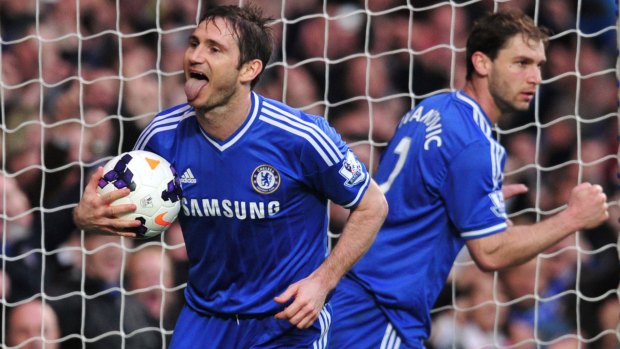By Craig Foster
With discussions between the PFA and FFA on the A-League commercial model imminent, now is the time to enshrine important principles supporting the grassroots.
We should take heed from the experience of the Premier League, which developed as a phenomenally successful commercial entity, while giving next to nothing back to the game below. This has inestimably harmed the development of the English game, both in numbers and quality of players and coaches.

Top end: We must learn from the failings of the EPL.Credit: AFP
Indeed, with a record new broadcast deal having recently been signed, the English press has once again had cause to debate whether the EPL should be contributing more to the broader game. Problem is, once the horse has bolted, so to speak, it is very difficult to pull it back.
Had an indexed distribution been in place, the effects by now would have been incredible. Instead, as the world's richest league prospers, the game below is struggling in many ways.
Let us avoid the same scenario.
It is vital that at this point we have a broad discussion about how the A-League should be contributing to the rest of the game.
This is not only altruism but good business to feed the game that it, in turn, feeds from.
All parts of the game are linked, which is why the lesson about maintaining co-operation between the A-League and national teams was an important one at the start. This is a considerable failure of the EPL, for example. One must not cannibalise the other but, to the greatest extent possible, they should be mutually beneficial.
All of us contribute to the A-League, by attending games, watching on television, buying pay television subscriptions, merchandise and helping to grow the industry for those that have invested within. Their responsibility is to return the favour.
As the game grows and broadcast deals, in particular accelerate, it is vital that we enshrine important whole of game principles now.
In future, ownership will change and it is likely, given trends, that more will be foreign which carries an additional risk that priorities will not align with the broader Australian game.
I would encourage all parties to make sure a percentage of broadcast dollars are committed in perpetuity to the grassroots to ensure the entire pyramid grows strong.
Of course, in the next five to 10 years this may be negligible, but the principle will ensure that in time a meaningful amount has a tremendous impact.
How much? Well, the A-League receives just under $40 million a year in cash, and the AFL just over $200 million. When football reaches number one, even a small percentage would be considerable.
The goal should be for every child to enter a club, and to receive outstanding instruction, guidance and a developmental environment when taking their first steps. This would also partly alleviate the escalating problem of paying to train and the private academy system.
The question for PFA and FFA should be, how can we embed a policy that ensures the grassroots strengthens financially to benefit from their contribution to the growth in the professional game and to produce a virtuous cycle across the entire industry? A percentage of the commercial pie should be committed back to the game.
This can be linked, in the early stages, only to those regions covered by an A-League club to drive the cyclical value chain.
These funds can be applied to one or more grassroots clubs to professionalise, and expand their services to cater for more youngsters, with professional coaching and excellent facilities.
Alternatively, the funds may contribute to an accredited school system whereby Sydney FC, for example, are responsible for a number of public primary schools with a year-round football program. Ideally, both would occur.
In time, a distribution from the A-League will ultimately contribute to lower cost to play for kids, higher standards at grassroots, outstanding school programs and, eventually, increased football infrastructure investment.
But we have to decide this today.
If history is any guide, once allocations are made, they're almost impossible to reverse.
Just ask the English press.